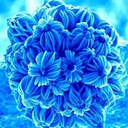22C3 - 2.2
22nd Chaos Communication Congress
Private Investigations
| Referenten | |
|---|---|

|
Niels Boeing |
| Programm | |
|---|---|
| Tag | 3 |
| Raum | Saal 1 |
| Beginn | 21:00 |
| Dauer | 01:00 |
| Info | |
| ID | 336 |
| Veranstaltungstyp | Vortrag |
| Track | Science |
| Sprache | englisch |
| Feedback | |
|---|---|
|
Haben Sie diese Veranstaltung besucht? Feedback abgeben |
The truth about Nanotechnology
A concise introduction to what NT is, what it can't do yet and what we should be aware of

Nanotechnology marks the merger of different technologies in structures smaller than 100 nm. While it could yield some powerful applications for sustainability, medicine and electronics, some hazards begin to appear that have to be addressed urgently
Nanotechnology is the manipulation of matter smaller than 100 nm and marks the merger of different fields of technologies like biotech, chemistry, electronics and physics towards a single new technology of the 21st century. Whereas some parts of nanotechnology have been known for decades like colloid chemistry that is now relabeled as chemical nanotechnology, others have been discovered only recently, especially the exploitation of quantum effects in nanoscale particles. They enable the development of applications that have no technical precursor in the past. Some nanotools for analysing matter on an atomic scale and basic applications like new materials are already on the market. But more complex devices like nanoelectronic processors are not yet feasible, because except for physical self organisation there are no precise methods of integrating nanostructures into micro or macro objects – or in the field’s jargon, true „bottom-up“ technologies like for instance molecular manufacturing as suggested by Eric Drexler. While nanotechnology could yield some powerful applications for a more sustainable use of ressources and energy production, medicine and electronics, some hazards begin to appear that have to be addressed urgently. The current debate about nanotech hazards is hampered by a lack of risk data as well as a useful classification of nanotech applications concerning human exposure. Therefore a classification is proposed that divides the field into 1. contained, 2. bioactive and 3. disruptive nanotechnologies. Finally a case is made for the creation of an „open nanotechnology“ where „open“ stands for 1. transparency of the technological knowledge and applications and 2. for the application of the Open Source idea to the realm of nanotechnological designs.
